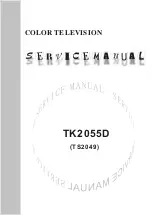
43
Using "Windows Embedded Standard 7"
2
2 Using "Windows Embedded Standard 7"
2.3.5 Recover the System
Overview
The
WES
client provides a feature that restores the system to the last backup or default factory settings
in the occurrence of a critical system issue during operation. You can back up an OS image which is
working normally to USB memory or the PXE server. You can revert to a backed up image when your
client has one of these problems:
z
When a system file is deleted accidentally or is corrupted
z
When the client computer is unstable or there is a problem with a device driver
z
When problems occur, after installing a new program or device
z
When the client computer is infected with a virus
z
When
Windows Embedded Standard
fails to start When a system file is deleted accidentally or is
corrupted
How to Recover the System
z
Recovery Using USB Memory
By following these steps, you can save all necessary files to USB memory, and boot up with the
backed up system on the USB memory and recover the system.
1
Format the USB memory device to enable the system to boot.
2
Save the
Windows Embedded Standard
image and the Backup/Recovery Utility which will be
recovered later to your USB memory.
3
Boot up with the USB memory.
4
Recover the system using the
Windows Embedded Standard
image and the Backup/
Recovery Utility in the USB memory.
z
Recovery Using Network Booting
This method is provided through the
PXE (Preboot eXecution Environment)
server. The
PXE
sever provides a client/server interface based on
TCP/IP
,
DHCP
, and
TFTP
. It allows an
administrator at a remote location to configure and boot the operating system onto a client over a
network.
Implement a
PXE
server.
Save the
Windows Embedded Standard
image and the Backup/Recovery Utility which will be
recovered later onto the
PXE
server.
Boot the client via the network.
Recover the system using the
Windows Embedded Standard
image and the Backup/
Recovery Utility saved on the
PXE
server via the network.
For more information, refer to the
PXE
Server User Manual.
















































